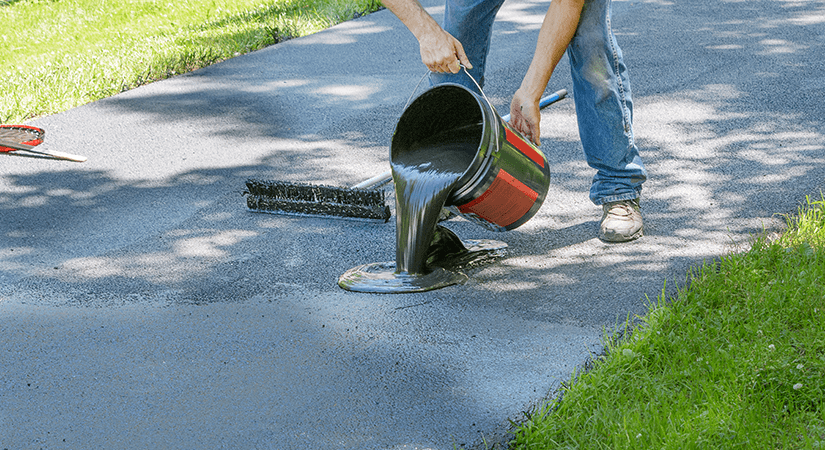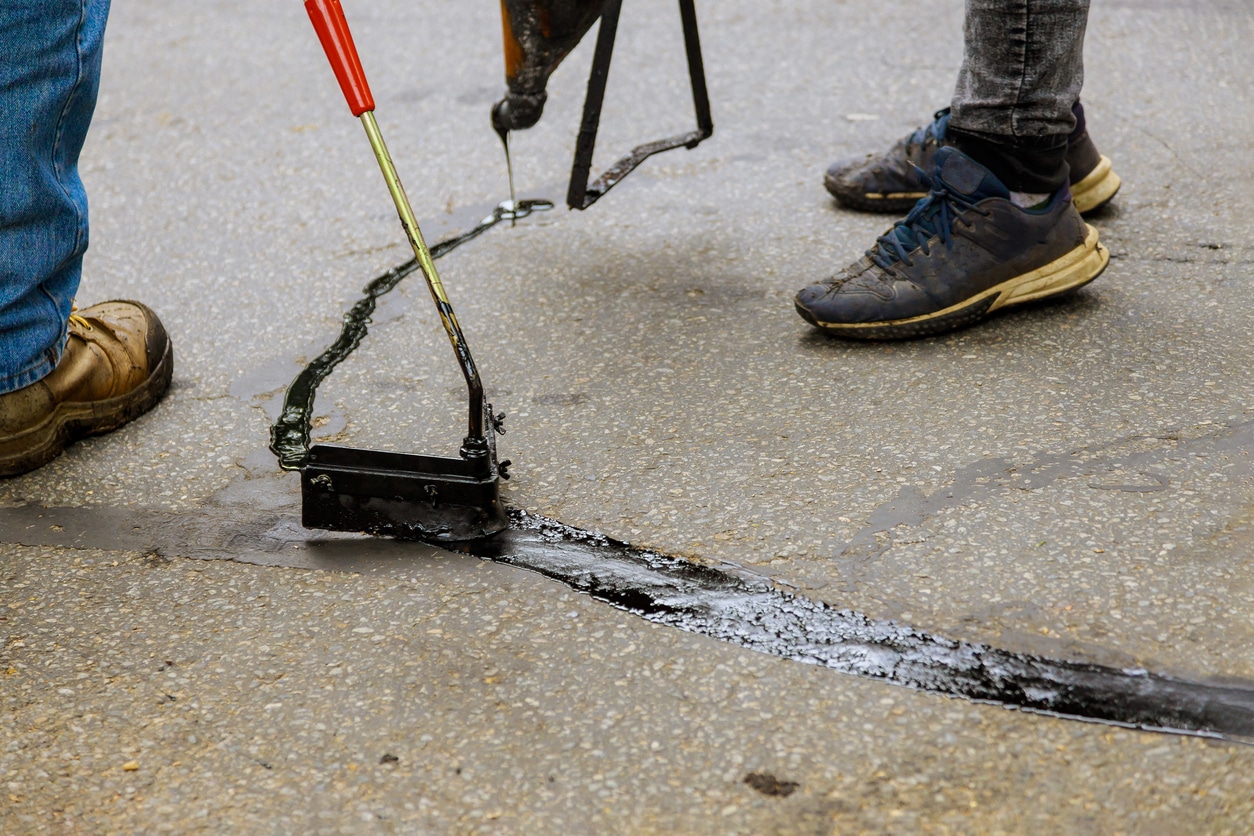Optimize Resilience: Hot Mix Asphalt Sealing for Angled Parking Structures
Optimize Resilience: Hot Mix Asphalt Sealing for Angled Parking Structures
Blog Article
Warm Mix Asphalt: A Lasting Solution for Sidewalk
Hot Mix Asphalt (HMA) has actually become a leading sustainable option for pavement services, using a myriad of ecological benefits and ingenious modern technologies. Its ability to minimize and reuse products power usage provides a compelling situation for its fostering in roadway building and construction tasks. Moreover, the long-term performance and longevity of HMA make it a preferred choice for framework advancement. As the demand for environmentally friendly building and construction practices expands, exploring the nuances of HMA's sustainability can give useful understandings into the future of sidewalk services.
Environmental Advantages of Hot Mix Asphalt

Moreover, Warm Mix Asphalt helps to alleviate urban heat island effects. Its dark color soaks up sunshine, decreasing the amount of heat mirrored back into the environment compared to lighter-colored sidewalks. This can decrease ambient temperature levels in metropolitan areas, lowering the need for air conditioning and inevitably reducing power intake.
Furthermore, Hot Mix Asphalt adds to enhanced stormwater administration. Its porous nature enables water to penetrate the pavement and recharge groundwater products, reducing runoff and the threat of flooding. These environmental benefits make Hot Mix Asphalt a sustainable choice for leading roads and highways.
Energy Efficiency in HMA Production
Is power performance an essential variable in the production of Hot Mix Asphalt (HMA)? Energy plays a significant function in the production of HMA, impacting both cost and ecological sustainability. One crucial facet of power effectiveness in HMA production is the use of warm mix asphalt (WMA) technologies.
Furthermore, improvements in plant technologies have led to even more energy-efficient HMA production processes. By enhancing power usage in HMA manufacturing, the sector can decrease its carbon impact while keeping premium sidewalk products.
Recyclability of Hot Mix Asphalt
The recyclability of Hot Mix Asphalt (HMA) is a crucial facet of its sustainability and lasting environmental effect. HMA is one of the most recycled materials in the United States, with over 100 million lots of recovered asphalt sidewalk (RAP) being recycled each year in new pavement building. Reusing HMA supplies numerous environmental benefits, such as decreasing the requirement for virgin products, decreasing power intake during production, and decreasing the amount of waste sent to garbage dumps.
The process of reusing HMA entails grating the existing pavement, squashing it right into smaller pieces, and blending it with brand-new aggregate and asphalt binder to create a recycled mix. On the whole, the recyclability of HMA plays a substantial function in promoting sustainable techniques within the sidewalk industry.

Long-Term Performance of HMA
Asphalt sidewalks demonstrate sturdiness and strength over an extensive period, reflecting the long-lasting performance of Hot Mix Asphalt (HMA) The durability of HMA can be credited to its capacity to hold up against rush hour lots, rough weather, and the results of aging. Research studies have shown that well-designed and correctly constructed HMA pavements can last for 20 years or even more with normal upkeep. The secret to making best use of the lasting efficiency of HMA depends on utilizing premium materials, use this link following ideal techniques in building and construction, and carrying out efficient maintenance strategies. Correct drain, routine inspections, and prompt fixings are see this vital for maintaining the architectural integrity of HMA pavements with time. Furthermore, developments in HMA technology, such as using polymer-modified binders and warm mix asphalt, have actually additionally improved the durability and long life of HMA pavements. By focusing on high quality construction and upkeep methods, HMA proceeds to verify itself as a affordable and lasting option for long-lasting sidewalk infrastructure.

HMA: Sturdiness and Sustainability
Demonstrating both durability and sustainability, Warm Mix Asphalt (HMA) has come to be a foundation in the construction of resilient pavement frameworks - angled parking. HMA's durability comes from its ability to stand up to heavy tons, harsh climate condition, and high web traffic volumes, making it a trustworthy option for streets, freeways, and airport runways. The make-up of HMA, which generally consists of aggregates, binder, and filler, plays a vital role in improving its long life and resistance to tear and use
In addition, HMA's sustainability lies in its recyclability and energy-efficient manufacturing procedure. The ability to reuse redeemed asphalt sidewalk (RAP) in brand-new HMA mixtures minimizes the need for virgin products and minimizes the environmental effect of sidewalk construction and maintenance. Furthermore, the power performance of producing HMA hinges on its lower mixing temperature levels contrasted to various other sidewalk materials, resulting in decreased power intake and greenhouse gas exhausts.
Verdict
To conclude, warm mix asphalt (HMA) supplies a lasting remedy for sidewalk with its environmentally friendly characteristics. HMA's recyclability, energy efficiency in production, and long-term resilience make it an environment-friendly selection for road building and construction. By saving natural resources, minimizing waste, and reducing greenhouse gas exhausts, HMA plays a crucial duty in advertising sustainability in framework growth. Its capability to alleviate metropolitan warm island effects further underscores its importance in developing environmentally mindful and resistant pavement systems.
HMA is one of the most recycled materials in the United States, with over 100 million tons of redeemed asphalt pavement (RAP) being reused every year in new sidewalk building.The process of reusing HMA involves crushing the existing pavement, squashing it into smaller sized pieces, and blending it with new accumulation and asphalt binder to create a recycled mix.Asphalt sidewalks demonstrate longevity and durability over an extended period, reflecting the long-lasting efficiency of Warm Mix Asphalt (HMA) In addition, improvements in HMA technology, such as the use of polymer-modified binders and cozy mix asphalt, have better enhanced the longevity and durability of HMA sidewalks. The ability to reuse redeemed asphalt pavement (RAP) in new HMA combinations decreases the need for virgin materials and reduces the ecological impact of pavement building and construction investigate this site and maintenance.
Report this page